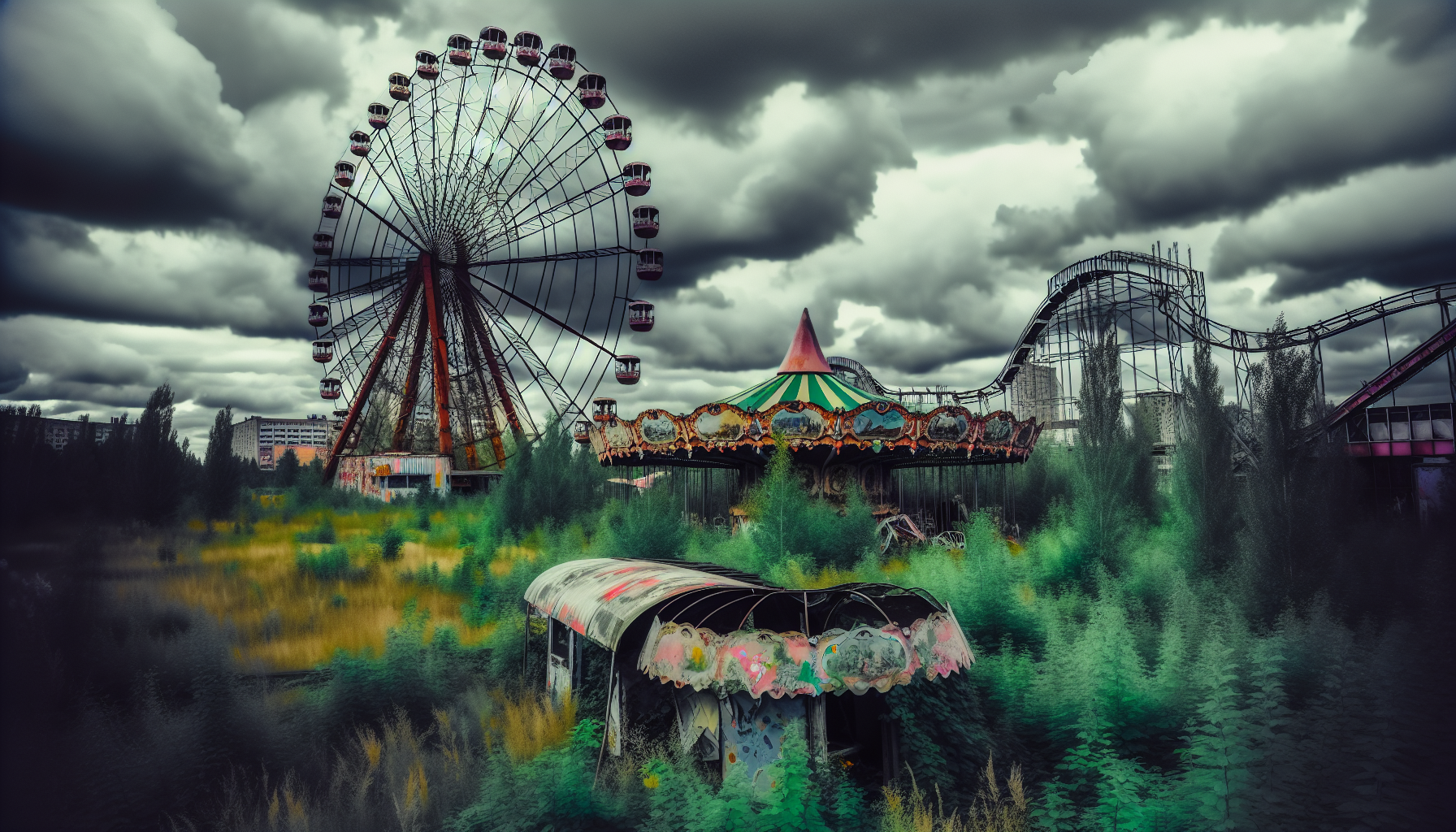Amidst the relentless onslaught of climate-induced calamities, pockets of eerie stillness endure in the least expected places. Former epicenters of laughter and exhilaration, amusement parks now stand as monuments to joy that once was. In a world succumbing to ecological disintegration, these Silent Havens spell out a narrative of decline – an oddly serene tableau whispering of haste, decay, and the ghostly remnants of human merriment.
As we traverse the skeleton of a once vibrant merry-go-round, the eerie creak of rusted mechanisms sings a morbid lullaby, the corroded steeds still in mid-gallop as if frozen in time. Where screams of delight once pierced the air, now only the faint rustle of wind-swept debris echoes, composing a requiem for lost revelries.
Wandering through the desolate walkways, a juxtaposition unfolds before us. Vines creep over cotton candy stands, pastel colors are now layers beneath verdigris and grime, and toppled clown heads seem to smirk at their own absurd tragedy. This scene is not unique – it is an archetypal page from the book of our Green Dystopia, where the remnants of human enterprise are inextricably bound to the reclamation by nature.
This peculiar calm is haunting – a stark contrast to our sedulous quest for fun, it now provokes contemplation about the fragility of human indulgence. There’s an overarching narrative here, similar to the eerie silence of the Lonesome Road – as the calamities of our making push us out, the Earth begins her own retelling of space and time.
Photographs taken within these parks capture both the sadness and surreal beauty in the paradox of decay. The once glowing Ferris wheel, now a gaunt skeleton, becomes an artifact of human aspiration clashing with reality. Dilapidated roller coasters stand as haphazard sculptures – no longer flights of fancy but testaments to a civilization caught off-guard by its environmental hubris.
The echoes of this environmental neglect are a common theme with these wastelands of whimsy. Abandoned amusement parks are not just about the loss of a place to laugh, but also the loss of the ecosystems that were bulldozed to build them, now clawing back their rightful place. Wildlife claims residence in the hollows of bumper cars and carousels, adapting in ways that both inspire and dishearten, given the circumstances of their return.
It’s a sign of the times that where children queued for rides, now one might encounter a wary fox or a mélange of flora overtaking prize booths. There’s an irrefutable lesson here, symbolized by the silent reclaiming force of nature amidst the backdrop of our planet’s turmoil – a grim harbinger that the party can’t last forever on borrowed ecological credit.
In stark contrast to the bright billboards and flashing lights once promising ‘The Greatest Show on Earth’, the Silent Havens now host a silent show of resilience and rebirth, minus the audience. It’s a profound irony that such places are more genuine in their current abandoned states than they ever were as manicured oddities isolated from the true rhythms of the planet.
Even in this state of desertion and decay, the allure of these parks remains. There’s enlightenment to be found in their silence, a deep, unsettling meditation on what it means to entertain and be entertained at the expense of our surroundings. As we step out from the Silent Havens, the whisper of the wind through the broken down rides serves as a stark reminder that our environmental debts are coming due, and the cost may be our capacity for joy itself.
